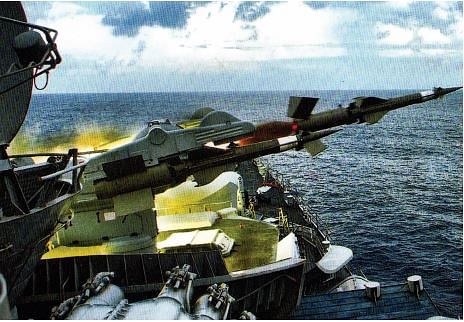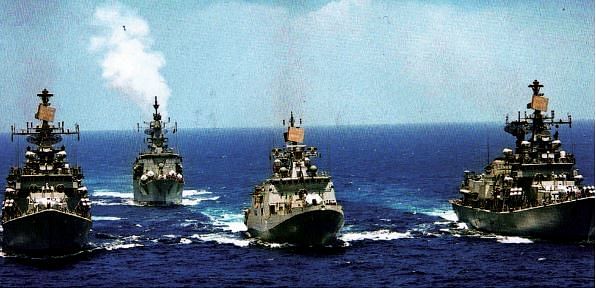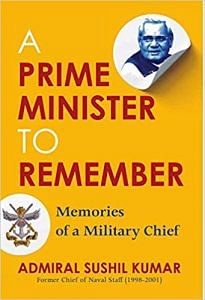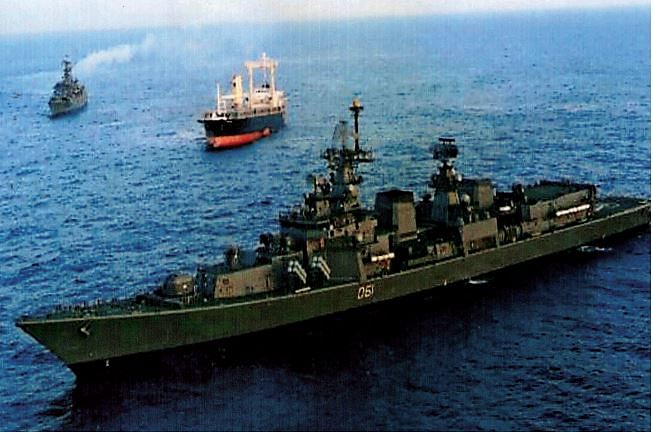It was in November 1999 that the Indian Coast Guard first received a tip-off. A vessel had been seen loitering off the Sri Lankan coast and looked suspiciously like the Japanese ship, Alondra Rainbow which had gone missing, but the name it displayed was Mega Rama.
Shadowed by aircraft of the Indian Coast Guard, a vivid description with photographs of Mega Rama were flashed for verification to the international piracy centres worldwide. As the suspicious vessel entered Indian territorial waters, it was tailed by our Coast Guard interceptor boats but refused to stop. Gathering speed, Mega Rama managed to evade interception by the Coast Guard and slipped away into the mid-Arabian Sea. By then, the international piracy centres in coordination with shipping agencies had confirmed that the credentials of Mega Rama were suspicious as such a vessel did not exist. On the other hand, the physical characteristics conformed to that of the pirated Japanese ship, Alondra Rainbow.
The Indian Navy had been closely monitoring the Coast Guard action but as soon as the suspicious vessel raced away into the high seas, the Navy upgraded its operational response to deploy a task force to intercept Alondra Rainbow alias Mega Rama.
The Indian Navy was quite convinced that it could rightfully use force to intercept the masquerading ship in the middle of the ocean as international maritime law provides for such a situation. But there could be international ramifications as our warships would need to carry out the interception in international waters where the right of innocent passage, which allows a vessel to pass through the territorial waters of another country, was a highly contentious and sensitive issue. Moreover, the use of force to take control of the vessel could not be ruled out.
The Commander-in-Chief of the Western Naval Command, Admiral Madhvendra Singh, had been alerted from the naval headquarters by Admiral Suresh Bangara, head of the Navy’s Operations Division. The mission was to intercept Mega Rama in accordance with Clause III of the United Nations Convention on the Law of the Sea (UNCLOS). The directive to ‘Proceed with dispatch to intercept the suspicious ship’ would have been interpreted by the Indian Navy’s task force Commander as prescribed in the Standard Operating Procedure (SOP): ‘Go at full speed to inspect and verify the credentials of a suspicious ship masquerading as Mega Rama and apprehend (capture) this vessel, using force, if necessary.’ (UNCLOS empowers all Navies to act in this way to curb piracy and terrorism at sea.)
A task force of the Western Fleet, which was on a routine patrol near the Gulf led by a Delhi class missile destroyer, was accordingly diverted to intercept the suspicious ship and directed to proceed with despatch but await final orders for interception. Meanwhile, frantic discussions were on, between the MoD and the MEA and the ball had finally landed up in the court of Foreign Minister Jaswant Singh.
Also read: How Indian Navy operated a secret commando group and spooked Pakistan in 1971
Acquaintances of yore
In the mid-1950s, Foreign Minister Jaswant Singh and I were both young cadets, training to be officers at the National Defence Academy. Both of us were very keen horsemen and fond of polo. With his superb equestrian talent, Jaswant Singh was easily inducted by the Indian Army as a cavalry officer, while I found myself riding the waves at sea!
More than four decades later, destiny brought us together at the national capital in Delhi and we renewed our passion for horse riding and polo. It was at one of our daily equestrian outings that the topic of Alondra Rainbow cropped up. Since the Japanese ambassador had already met Foreign Minister Jaswant Singh, I only needed to fill in the blanks.
Operation Alondra Rainbow began as a routine interception at sea but within a few hours the situation had acquired serious international implications. With the suspicious ship racing towards the coastal waters of Saudi Arabia, a hot pursuit would require approval at the highest governmental level. Foreign Minister Jaswant Singh advised us to seek the opinion of Prime Minister Vajpayee.
Also read: India and Myanmar are sending a strong message to China – with a submarine
Vajpayee’s decision
Prime Minister Vajpayee had been suitably briefed in advance about the fast-paced developments at sea and the serious implications of intercepting a foreign ship mid-ocean, which could have unforeseen international repercussions.
The meeting with the Prime Minister lasted for barely a few minutes and it was Foreign Minister Jaswant Singh who did all the talking and explaining in his eloquent style and baritone voice. Defence Minister Fernandes and I were silent spectators.
Finally, giving his usual characteristic nod, the Prime Minister, said, ‘If you have no doubts, complete your mission.’
Also read: India, Japan will hold first ever 2+2 talks, cooperation in Indo-Pacific region on agenda
A successful operation
With the green signal from the Prime Minister, the task force Commander at sea was given the go ahead to intercept the suspicious vessel masquerading as Mega Rama. By late afternoon, signals from the Western Fleet confirmed that Mega Rama had been successfully intercepted almost 800 kilometres from the Indian coast.
As the Indian Navy’s task force encircled the vessel, the pirates on board panicked. Nabbed red-handed, the desperadoes tried to frantically destroy all evidence by pulling out the plugs in the vessel and scuttling their ship. But swift intervention by the Indian Navy task force foiled their attempts.


Finally in utter panic, the pirates triggered off the emergency satellite-linked distress alarm, not realising that the first part of the pre-coded radio message would be the name of the ship — and Alondra Rainbow it indeed was! Marine Commandos from the Indian Navy warships immediately slithered down from helicopters and swiftly rounded up the pirates.
That evening I had a surprise visitor at my office. It was the Japanese ambassador. He was excited and ecstatic about the Indian Navy’s action in rescuing Alondra Rainbow. Frankly, till that moment I had not realised the significance of this event and what a boost it had given to Indo-Japanese relations and to international maritime cooperation in general.
For the Indian Navy and Coast Guard, it was just another operation in the normal course of duty but the acclaim that the nation received was an immense reward in itself. Seen in hindsight, the Alondra Rainbow incident turned out to be a riveting mid-ocean operation that brought our nation international acclaim from the maritime community.
Yet, how many would know that none of this would have been possible but for the split-second decision of Prime Minister Vajpayee, who gave the green signal to the Navy. The trust and confidence that he reposed in his team was inspirational but more than that was his ability to take extremely difficult decisions in matters that could have serious international repercussions.
Prime Minister Vajpayee never had the benefit of hindsight as we have today, two decades later. But he certainly had remarkable foresight that enabled him to take such a weighty decision — in real time.
 This excerpt from A Prime Minister to Remember: Memories of a Military Chief by Admiral Sushil Kumar has been published with permission from Konark Publishers.
This excerpt from A Prime Minister to Remember: Memories of a Military Chief by Admiral Sushil Kumar has been published with permission from Konark Publishers.




Very very impressive….🙏🇮🇳